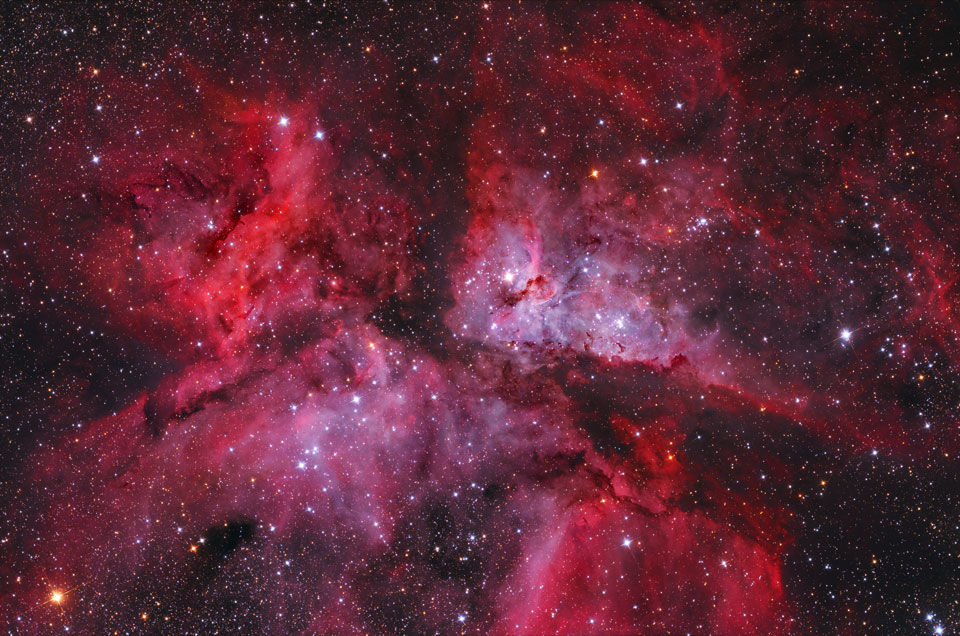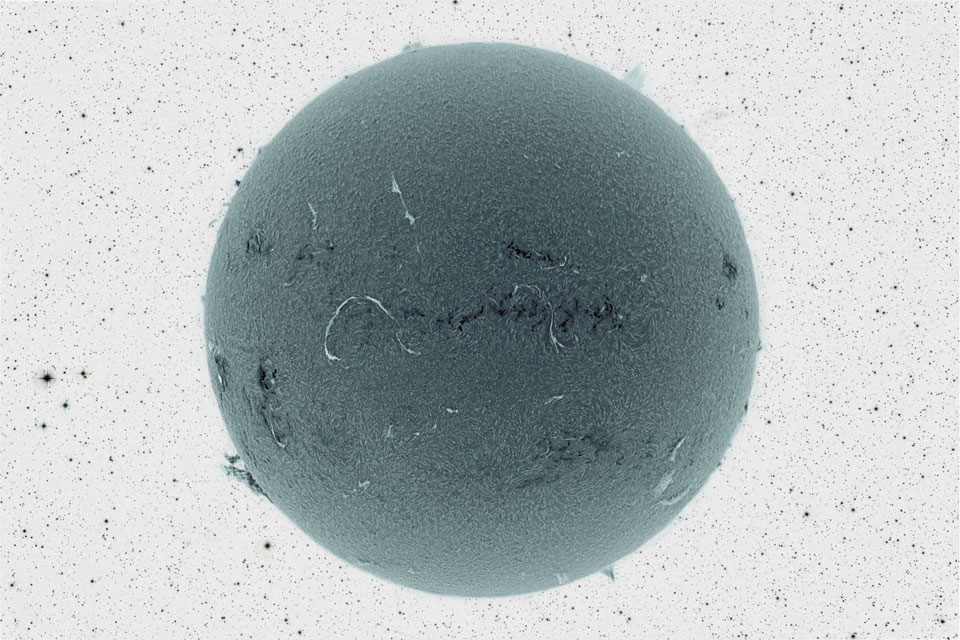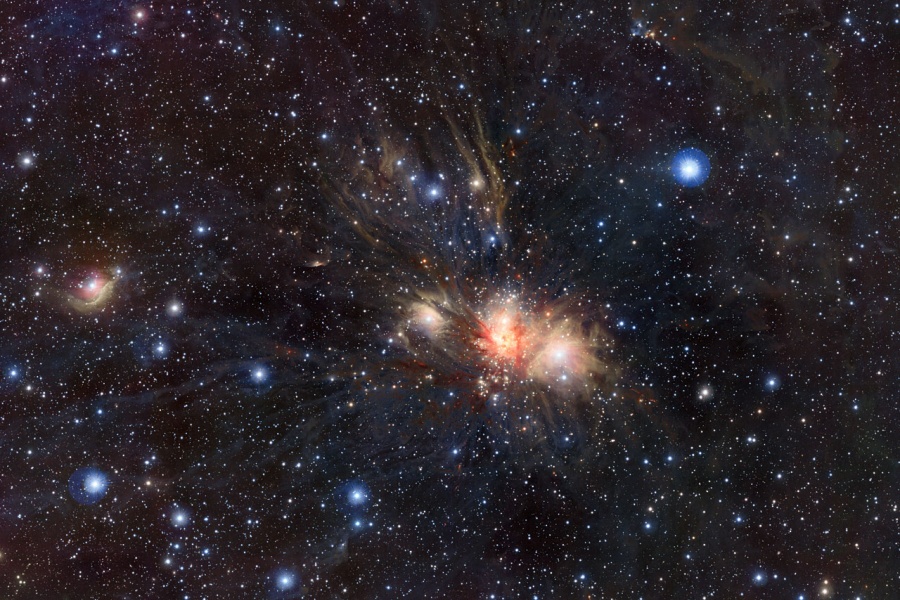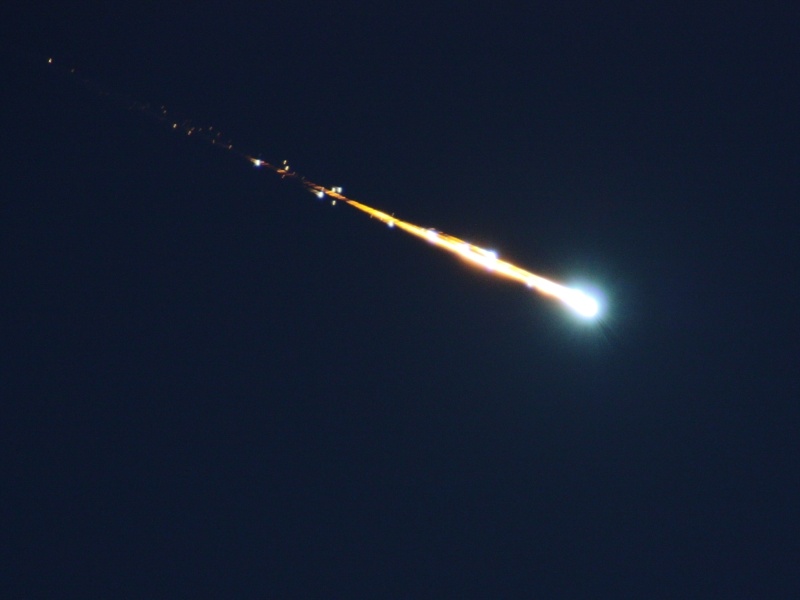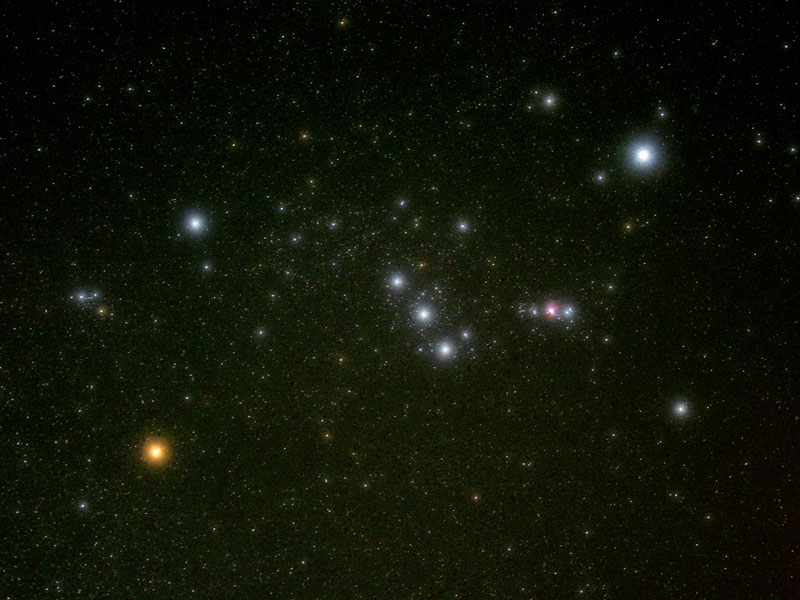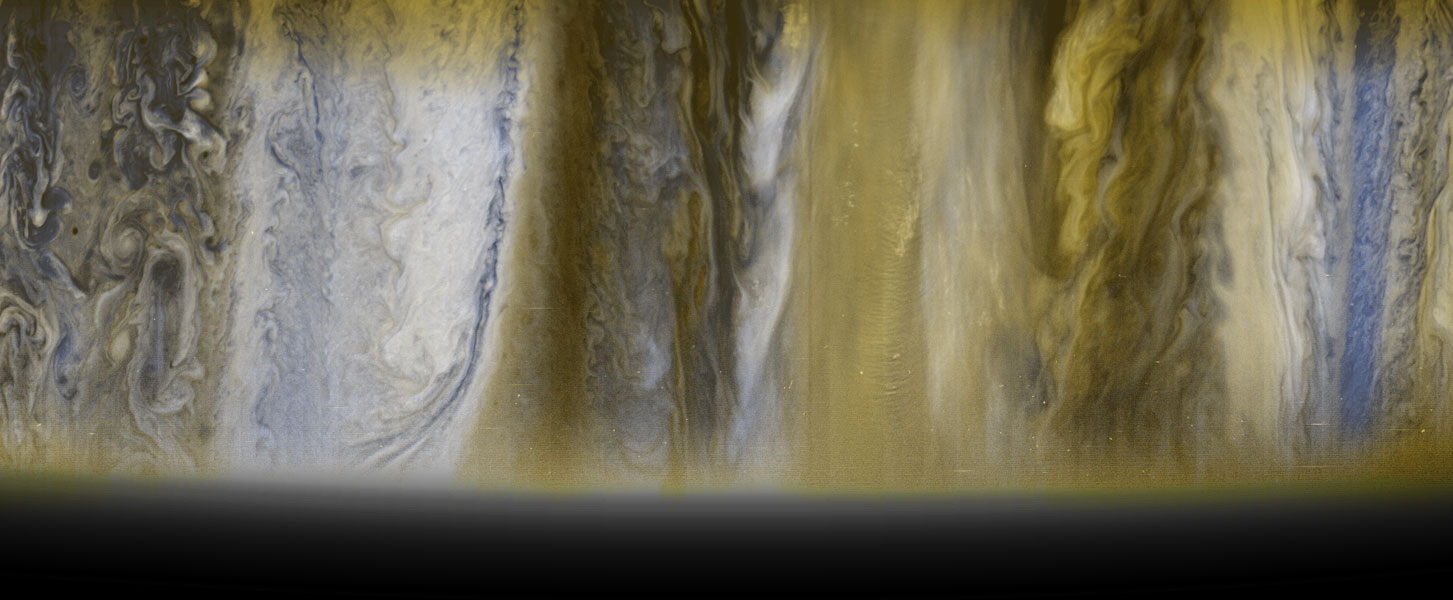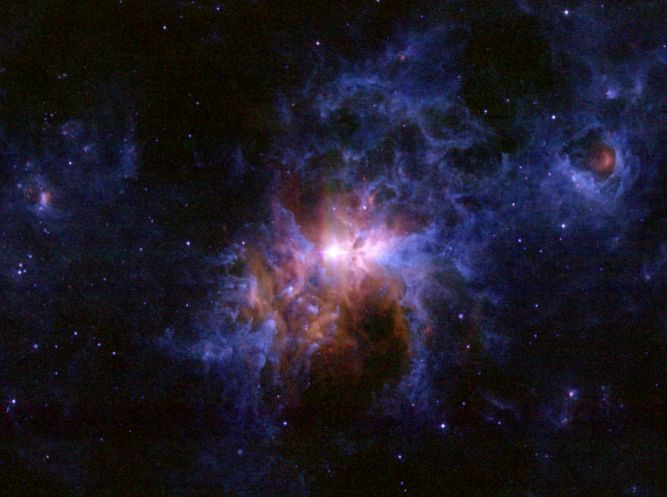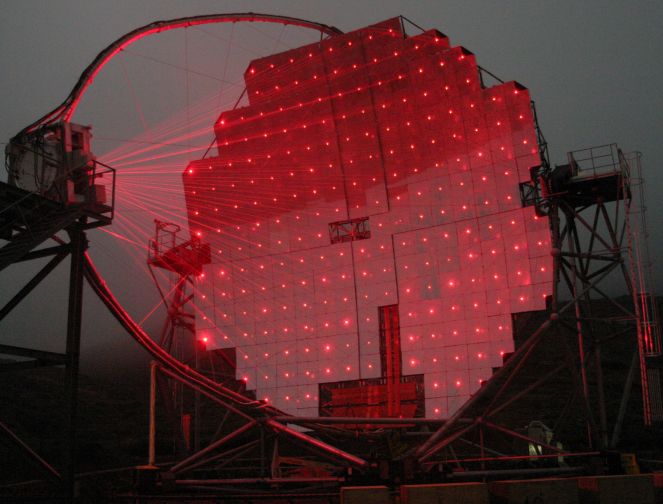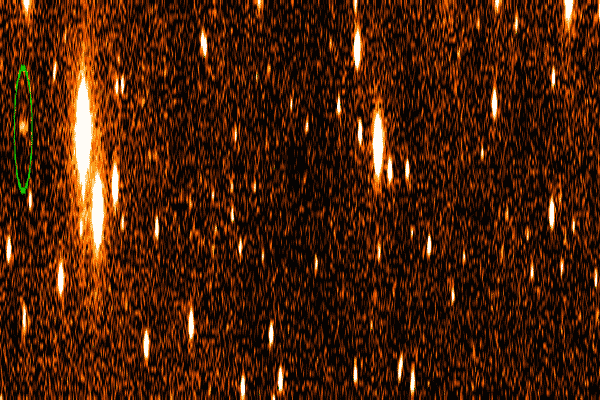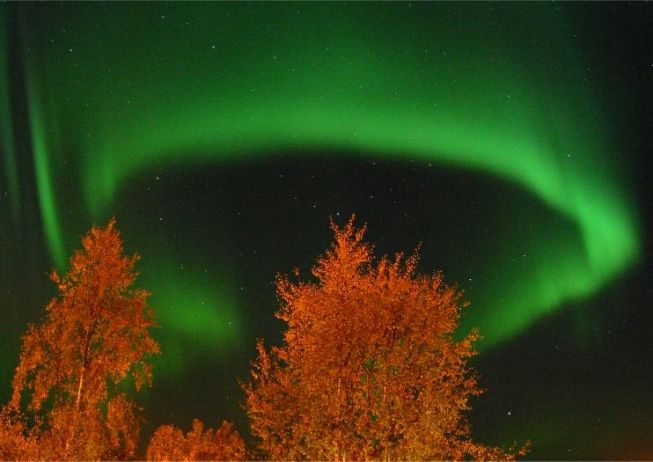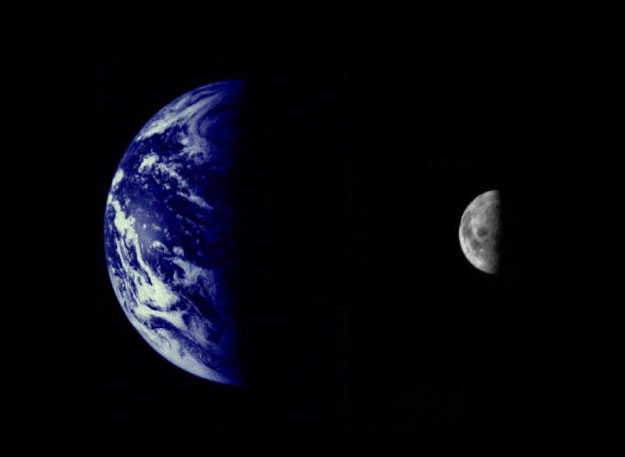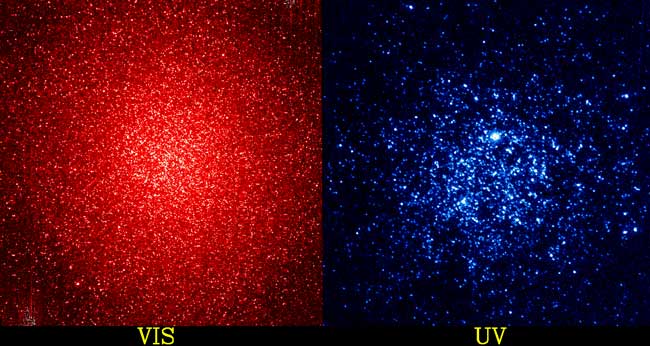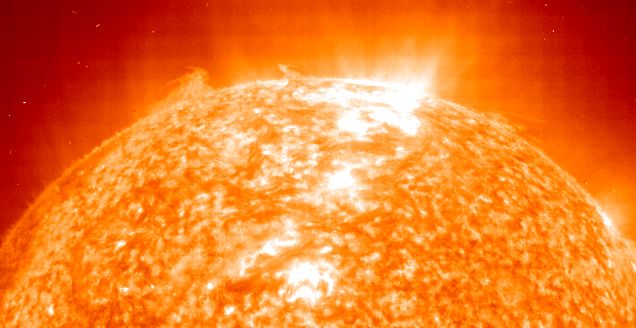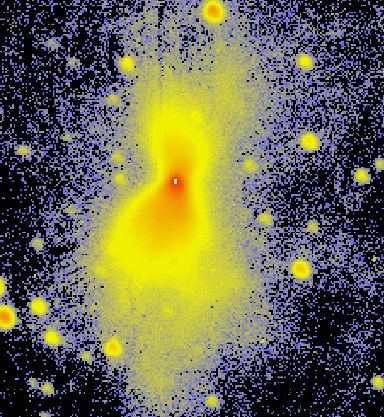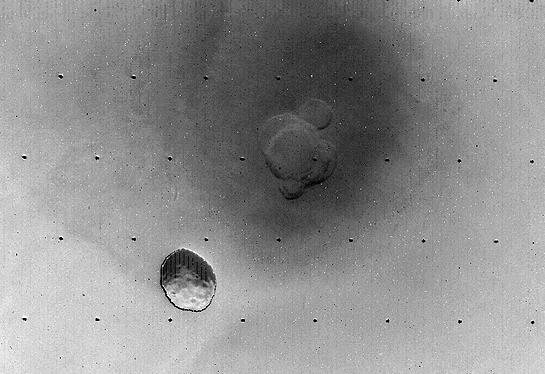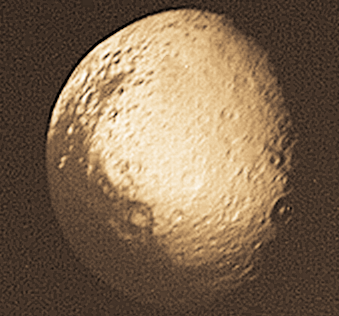APOD Retrospective: October 15
Posted: Sat Oct 15, 2011 3:59 am
| << Previous | Index | Next >> |
2014 What is that changing object in a cold hydrocarbon sea of Titan? Radar images from the robotic Cassini spacecraft orbiting Saturn have been recording the surface of the cloud-engulfed moon Titan for years. When imaging the flat -- and hence radar dark -- surface of the methane and ethane lake called Ligeia Mare, an object appeared in 2013 just was not there in 2007. Subsequent observations in 2014 found the object remained -- but had changed! The featured image shows how the 20-km long object has appeared and evolved. Current origin speculative explanations include bubbling foam and floating solids, but no one is sure. Future observations may either resolve the enigma or open up more speculation.
2013 A jewel of the southern sky, the Great Carina Nebula, also known as NGC 3372, spans over 300 light-years, one of our galaxy's largest star forming regions. Like the smaller, more northerly Great Orion Nebula, the Carina Nebula is easily visible to the unaided eye, though at a distance of 7,500 light-years it is some 5 times farther away. This gorgeous telescopic portrait reveals remarkable details of the region's glowing filaments of interstellar gas and obscuring cosmic dust clouds. Wider than the Full Moon in angular size, the field of view stretches over 300 light-years across the nebula. The Carina Nebula is home to young, extremely massive stars, including the still enigmatic variable Eta Carinae, a star with well over 100 times the mass of the Sun. Eta Carinae is the brightest star near the image center, just left of the dusty Keyhole Nebula (NGC 3324). While Eta Carinae itself maybe on the verge of a supernova explosion, X-ray images indicate that the Great Carina Nebula has been a veritable supernova factory.
2012 Does this strange dark ball look somehow familiar? If so, that might be because it is our Sun. In the above image, a detailed solar view was captured originally in a very specific color of red light, then rendered in black and white, and then color inverted. Once complete, the resulting image was added to a starfield, then also color inverted. Visible in the above image of the Sun are long light filaments, dark active regions, prominences peaking around the edge, and a moving carpet of hot gas. The surface of our Sun has become a particularly busy place over the past two years because it is now nearing Solar Maximum, the time when its surface magnetic field is wound up the most. Besides an active Sun being so picturesque, the plasma expelled can also become picturesque when it impacts the Earth's magnetosphere and creates auroras.
2011 Magnificent spiral galaxy NGC 4565 is viewed edge-on from planet Earth. Also known as the Needle Galaxy for its narrow profile, bright NGC 4565 is a stop on many telescopic tours of the northern sky, in the faint but well-groomed constellation Coma Berenices. This sharp, colorful image reveals the galaxy's bulging central core cut by obscuring dust lanes that lace NGC 4565's thin galactic plane. An assortment of other background galaxies is included in the pretty field of view, with neighboring galaxy NGC 4562 at the lower right. NGC 4565 itself lies about 40 million light-years distant and spans some 100,000 light-years. Easily spotted with small telescopes, sky enthusiasts consider NGC 4565 to be a prominent celestial masterpiece Messier missed.
2010 Drifting through the one-horned constellation Monoceros, these dusty streamers and new born stars are part of the active Monoceros R2 star-forming region, embedded in a giant molecular cloud. The cosmic scene was recorded by the VISTA survey telescope in near-infrared light. Visible light images show dusty NGC 2170, seen here just right of center, as a complex of bluish reflection nebulae. But this penetrating near-infrared view reveals telltale signs of ongoing star formation and massive young stars otherwise hidden by the dust. Energetic winds and radiation from the hot young stars reshape the natal interstellar clouds. Close on the sky to the star-forming Orion Nebula, the Monoceros R2 region is almost twice as far away, about 2700 light-years distant. At that distance, this vista spans about 80 light-years.
2009 The brilliant fireball meteor captured in this snapshot was a startling visitor to Tuesday evening's twilight skies over the city of Groningen. In fact, sightings of the meteor, as bright as the Full Moon, were widely reported throughout the Netherlands and Germany at approximately 17:00 UT. Accompanied by sonic booms and rumbling sounds, the meteor was seen to break up into bright fragments, eventually leaving a persistent smoke-like trail. Even though there are bright fireball meteors in planet Earth's atmosphere every day, sightings of them are relatively rare because they more often occur over oceans and uninhabited areas.
2008 Orion, the Hunter, is one of the most easily recognizable constellations in planet Earth's night sky. But Orion's stars and nebulas don't look quite as colorful to the eye as they do in this lovely camera image, taken early last month at the Black Forest Star Party from Cherry Springs State Park in Pennsylvania, USA. In this single exposure, cool red giant Betelgeuse takes on a yellowish tint as the brightest star at the far left. Otherwise Orion's hot blue stars are numerous, with supergiant Rigel balancing Betelgeuse at the upper right, Bellatrix at the upper left, and Saiph at the lower right. Lined up in Orion's belt (bottom to top) are Alnitak, Alnilam, and Mintaka all about 1,500 light-years away, born of the constellation's well studied interstellar clouds. And if the middle "star" of Orion's sword looks reddish and fuzzy to you, it should. It's the stellar nursery known as the Great Nebula of Orion.
2007 The New Horizons spacecraft took some stunning images of Jupiter earlier this year while on the way out to Pluto. Famous for its Great Red Spot, Jupiter is also known for its regular, equatorial cloud bands, visible through even modest sized telescopes. The above image was taken near Jupiter's terminator, and shows that the Jovian giant possibly has the widest diversity of cloud patterns in our Solar System. On the far left are clouds closest to Jupiter's south pole. Here turbulent whirlpools and swirls are seen in a dark region, dubbed a belt, that rings the planet. Even light colored regions, called zones, show tremendous structure, complete with complex wave patterns. The energy that drives these waves likely comes from below. New Horizons is the fastest space probe ever launched, and is zipping through the Solar System on track to reach Pluto in 2015.
2006 Adrift 1,500 light-years away in one of the night sky's most recognizable constellations, the glowing Orion Nebula and the dark Horsehead Nebula are contrasting cosmic vistas. They both appear in this stunning composite digital image assembled from over 20 hours of data that includes exposures filtered to record emission from hydrogen atoms. The view reveals extensive nebulosities associated with the giant Orion Molecular Cloud complex, itself hundreds of light-years across. The magnificent emission region, the Orion Nebula (aka M42), lies at the upper right of the picture. Immediately to its left are a cluster of of prominent bluish reflection nebulae sometimes called the Running Man. The Horsehead nebula appears as a dark cloud, a small silhouette notched against the long red glow at the lower left. Alnitak is the easternmost star in Orion's belt and is seen as the brightest star to the left of the Horsehead. Below Alnitak is the Flame Nebula, with clouds of bright emission and dramatic dark dust lanes. Fainter tendrils of glowing hydrogen gas are easily traced throughout the region in this Orion deep field.
2005 Eta Car is a massive star, but it's not as bright as it used to be. Now only easily visible in binoculars or a small telescope, Eta Carinae has a history of spectacular flaring and fading behavior. In fact, in April of 1843 Eta Car briefly became second only to Sirius as the brightest star in planet Earth's night sky, even though at a distance of about 7,500 light-years, it is about 800 times farther away. Surrounded by a complex and evolving nebula, Eta Carinae is seen near the center of this false-color infrared image, constructed using data from the Midcourse Space Experiment (MSX). The MSX satellite mapped the galactic plane in 1996. In the picture, wispy, convoluted filaments are clouds of dust glowing at infrared wavelengths. Astronomers hypothesize that Eta Car itself will explode as a supernova in the next million years or so. Massive Eta Car has even been considered a candidate for a hypernova explosion and the potential source of a future gamma-ray burst.
2004 Is it magic? On a rare foggy night, mysterious laser beams seem to play across the MAGIC telescope at Roque de los Muchachos on the Canary Island of La Palma. The lasers are actually part of a system designed to automatically adjust the focusing of the innovative, seventeen meter wide, multi-mirrored instrument. The MAGIC (Major Atmospheric Gamma Imaging Cherenkov) telescope itself is intended to detect gamma rays - photons with over 100 billion times the energy of visible light. As the gamma rays impact the upper atmosphere they produce air showers of high-energy particles. The MAGIC camera records in detail the brief flashes of optical light, called Cherenkov light, created by the air shower particles that ultimately correspond to cosmic sources of extreme gamma-rays. While the MAGIC I telescope became operational this year, the dramatic picture shows the nearly completed version of the instrument in October 2003.
2003 Why didn't we see it? An undetected asteroid zipped past the Earth undetected last month in the closest near miss yet recorded -- within a quarter of the distance to the Moon. Such a close call is actually quite common -- what was new was that we did see it, although the detection occurred hours after it happened. In fact, a rock this size strikes the Earth roughly once a year and smaller rocks strike the Earth daily. The global danger from the bus-sized space rock was minimal. Robert Cash of Minor Planet Research Inc. discovered asteroid 2003 SQ222 in data from the sky-scanning Lowell Observatory Near Earth Object Search (LONEOS). Pictured above is the discovery image sequence of SQ222, shown stretched vertically to be more easily viewable. Objects like SQ222 are hard to detect because they are so faint and move so fast. An ability to scan the sky to detect, catalog, and analyze such objects has been increasing notably in recent years.
2002 Gusting solar winds and blasts of charged particles from the Sun made the early days of October rewarding ones for those anticipating auroras. While out enjoying the stormy space weather from Toemmeraas, Norway, Trygve Lindersen recorded this picturesque apparition of the northern lights with a digital camera on October 6. From this perspective, the curtains of green light formed a ring which seemed to hover, wraithlike, just above the foreground trees. But the ring of light was actually 100 kilometers or more above the trees and the greenish glow produced by oxygen molecules interacting with energetic electrons and fluorescing near the edge of space. After days of enchanting auroral displays on planet Earth, the solar activity which triggered October's geomagnetic storms seems to have subsided ... for now.
2001 How similar in size are the Earth and the Moon? A dramatic visual answer to this question is found by combining photographs taken by the Mariner 10 spacecraft that headed out toward Venus and Mercury in 1973. The Moon can be seen to have a diameter over one quarter that of Earth, relatively large compared to its planetary companion. In our Solar System, only Pluto and Charon are closer together in size. Striking features of the Earth visible to the passing spacecraft include blue oceans and white clouds, showing the Earth to be truly a water world.
2000 Does an old, red globular cluster have any hot, blue stars? The rightmost picture, taken by the Ultraviolet Imaging Telescope in ultraviolet light, shows that indeed it does. Pictured, Omega Centauri is the largest known globular cluster of over 200 in our Galaxy, containing well over a million stars. Many of these stars are evident in the visible light photograph on the left. When photographed in ultraviolet light, however, different and less numerous stars emerge, as evident on the photograph on the right. Most of these stars are thought to have evolved past the current stage of our Sun. These stars no longer fuse hydrogen to helium in their core but rather fuse helium into carbon. These stars will soon shed their outer envelopes and end up as smoldering carbon embers known as white dwarf stars.
1999 On July 31, 1964, Ranger 7 crashed into the Moon. Seventeen minutes before impact it snapped this picture - the first image of the Moon ever taken by a U.S. spacecraft. Of course Ranger 7 was intended to crash, transmitting close-up pictures of the lunar surface during its final moments. The Ranger program's goal was to begin high resolution mapping of the lunar surface in preparation for a future lunar landing. This first image covered 360 kilometers from top to bottom and is centered in the Mare Nubium (Sea of Clouds). The large crater at middle right, Alphonsus, is 108 kilometers in diameter.
On July 31, 1999, Lunar Prospector crashed into the Moon. During its successful 1 year mission to map the Moon's global properties from orbit, Lunar Prospector confirmed indications that water-ice could be trapped in permanently shadowed craters near the lunar poles. Its mission complete, controllers intentionally targeted the spacecraft to impact a crater wall, hoping that water could be more directly detected in the resulting debris cloud - although the chances of a successful detection were considered low. Astronomers analyzing the data recently announced that no visible signature of water was found, so the tantalizing case for water on the Moon remains open.
1998 The last 10 days have been great days for SOHO, the space-based SOlar and Heliospheric Observatory. Contact was completely lost with this international research spacecraft over 3 months ago but recovery teams have reacquired control of SOHO and, beginning October 5th, have been successfully switching on its scientific instruments. This October 13th view of the Sun in the light of ionized Helium atoms was recorded by the restored EIT instrument. It shows bright active regions and lofty prominences above the solar limb. North is toward the left rather than the top as the spacecraft's orientation has not yet been fully adjusted. (For a full Sun / full resolution view, click on the picture!) With the solar cycle approaching a maximum in the coming years, excitement continues to build as it becomes very likely that SOHO will be able to resume its unprecedented exploration of solar phenomena.
1997 A cold wind blows from the central star of the Boomerang Nebula. Seen here in a false color image of dust reflected starlight, the nebula lies about 5,000 light-years away. The boomerang shaped cloud appears to have been created by a high-speed wind of gas and dust blowing from an aging central star at speeds of over 300,000 miles per hour. This rapid expansion has cooled the nebular gas to about -458 degrees Fahrenheit or 1 degree above absolute zero, making it the coldest region observed in the distant Universe. The frigid Boomerang nebula represents a unique object for astronomers and is believed to be a star or stellar system evolving toward the planetary nebula phase.
1996 Hurtling through space a mere 3,000 miles above the Martian surface, the diminutive moon Phobos (below and left of center) was imaged against the backdrop of a large shield volcano by the Viking 2 Orbiter in 1977. This dramatic picture looks down from the Orbiter's viewpoint about 8,000 miles above the volcano, Ascraeus Mons. Phobos itself is 5,000 miles below the Orbiter. North is toward the top with the Sun illuminating the scene from the South (black dots are reference marks). For scale, Ascraeus Mons is about 200 miles across at its base while asteroid sized Phobos is about 15 miles in diameter. In this spectacular moon-planet image, volcanic calderas (craters) are visible at the summit of Ascraeus Mons -- while impact craters on the sunlit side of Phobos' surface can also be seen!
1995 Iapetus has an unusual surface, one half of which is very dark, the other half very light. This caused it's discoverer Cassini to remark that Iapetus could only be seen when on one side of Saturn but not the other. The reason for the difference between hemispheres is presently unknown. Iapetus is the third largest of Saturn's moon behind Titan and Rhea. Iapetus is composed predominantly of water ice.
| << Previous | Index | Next >> |

